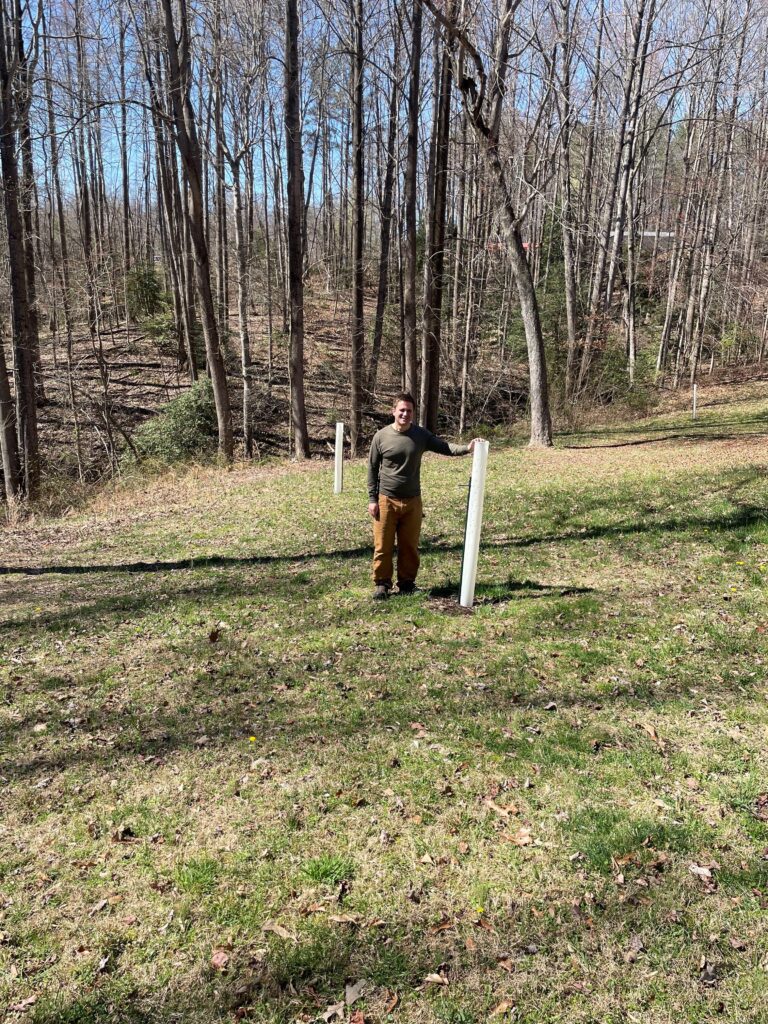
Growing Chestnuts: Who Plants Chinese Chestnut Trees in the US?
All types of people are growing chestnut trees in the United States!

This week, we will explore the fascinating world of Chinese chestnut trees in the United States and the individuals and farms behind their cultivation.
Chinese chestnut trees (Castanea mollissima) have a rich history in the United States, dating back to the late 19th century when they were first introduced as a potential alternative to the American chestnut (Castanea dentata), which was decimated by chestnut blight. Since then, Chinese chestnuts have gained popularity among growers and enthusiasts alike for their resistance to blight, delicious nuts, and ornamental value.
Below we share the stories of a few of our customers to answer the question, who is planting chestnut trees in the United States. There are many people joining the movement but these stories are fairly typical. Love to hear your story on the United Chestnut Community Facebook Group!
1. Farmers and Orchardists: Let’s start with Joel Hubbard, owner of Georgia Chestnuts, located on the outskirts of Atlanta. Joel and the team have purchased thousands of Chinese chestnuts from us and continue to expand their orchards. Here is a link to a recent podcast with Joel discussing the financial picture of chestnut operations.

Many farmers and orchardists across the country have recognized the potential of Chinese chestnuts as a viable agricultural crop. With their resilience to disease and relatively low maintenance requirements, Chinese chestnut trees offer a sustainable and profitable alternative for growers. Whether it’s small-scale family farms or more extensive commercial orchards, these dedicated individuals play a crucial role in expanding the presence of Chinese chestnut trees in the agricultural landscape.

2. Building a Future, Together. John and Nichole visited us not long ago and picked up their first batch of chestnut trees for a plot of land they purchased. Their story is so similar to ours that we are having them join an upcoming episode of the Branching Out podcast.
They live in Colorado but desire to settle down in a more rural setting one day—not too far from United Chestnuts in Falls of Rough, KY, actually!


Maybe they create orchards and join the movement to restore the chestnut as a food product in the United States. Or perhaps they just work to beautify their land and increase the property value at the same time. Then there’s the trend of incorporating conservation practices, attracting wildlife or simply creating a place of their own to retreat to. Many of our friends and future customers are looking to own a piece of property. It’s achievable with persistent desire, focus, and hard work.
3. Lovers of Wildlife. Matt and Paige own a dozen acres in Virginia, not too far from the hustle and bustle of DC. They treasure their space, love many types of trees, and are passionate about creating a wildlife sanctuary. Plus, like many of us, they committed to producing food that benefits their family–animals included.

Beyond commercial agriculture and conservation initiatives, Chinese chestnut trees have also found a place in home gardens and landscapes. Whether planted for their ornamental beauty, shade-providing canopy, or bountiful harvest of sweet nuts, home gardeners and enthusiasts take pride in cultivating these trees in their yards and community spaces.
We shipped Paige and Matt five chestnut trees, and their next order is being processed now! Need trees, click here for information.
4. Generational Expansion
Josh and his uncle visit us every year to purchase trees as they work to clear land and add productive trees to their place. And like so many customers, they get the kids involved cultivating a love of the outdoors, trees, nature and hunting.

5. Educational Institution. United Chestnuts and EBB Farms are members of the Chestnut Improvement Network and thrilled to sell the University of Missouri’s Center for Agroforestry UMCA™ PQK chestnut seedlings this fall. Curious, reach out for details.

Educational institutions like UMCA and similar research centers play a vital role in studying and promoting the cultivation of Chinese chestnut trees. Through research, experimentation, and outreach programs, these institutions provide valuable knowledge and resources to farmers, conservationists, and home growers, furthering the understanding of Chinese chestnut cultivation practices and their broader implications for agriculture and ecology.

In conclusion, planting Chinese chestnut trees in the United States is a collaborative effort involving farmers, conservationists, home gardeners, and institutions working towards a common goal of sustainable agriculture, ecological restoration, and community enrichment.
As we continue to celebrate the beauty and benefits of these remarkable trees, let’s also recognize and appreciate the diverse individuals and communities dedicated to their cultivation and conservation.
Stay tuned for more insightful updates on chestnuts in our upcoming blogs and with subject matter experts in the industry podcast Branching Out. Until next time, happy planting!
